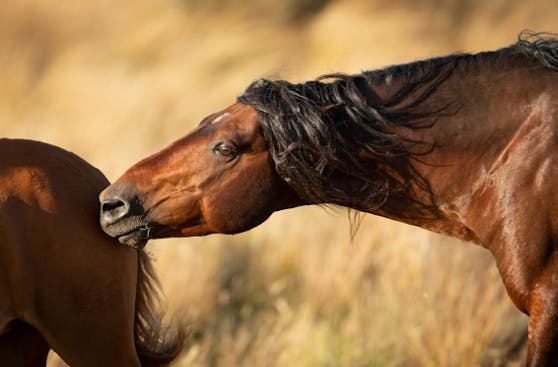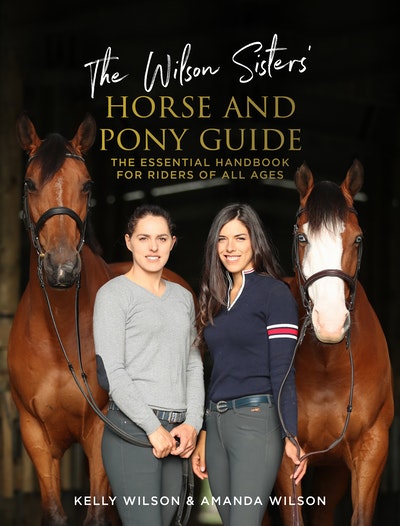Understand your horse or pony better by learning these common body language cues
Snaking, ears back and eyes tense

SNAKING: If a horse lowers its head slightly and waves it from side to side while its ears are back or its teeth are bared, it is a threatening act and is often followed by the horse charging at you. In the wild, this behaviour is often used by stallions and mares when they are fighting, or trying to herd an uncooperative horse.
EARS BACK: If the ears are facing backwards but aren’t pinned back, the horse may be listening to, or focusing on, something behind it. But if the ears are pinned back and combined with other signs of tension, like a swishing tail or a hard glint to the eye, the horse may be worried about something behind it.
TENSE EYES: When the muscles around a horse’s eyes tighten it is the most subtle sign of stress, fear or pain.
Whites of eyes showing

WHITES OF THE EYES SHOWING: This usually means that the horse is anxious or scared. However, some horses naturally have more white showing around the eye, so it’s important to know what is normal for your horse.
Flehmen

FLEHMEN: When a horse smells something it is unsure of, it may raise its head, curl its upper lip and breathe in deeply. This behaviour is particularly common with stallionswhen they come across a mare in heat.
Sweating, head raised

SWEATING: Sweating during training sessions can be a sign of tension, especially if combined with trembling. If your horse breaks out in a sudden sweat, immediately reduce the pressure your horse is under and restore relaxation. Horses can also sweat in extreme temperatures, or if ridden for too long without the appropriate fitness.
HEAD RAISED: If accompanied by other signs of tension, a raised head may indicate the horse has identified something it perceives as dangerous. In this instance it is unlikely the horse will be paying attention to you (unless you are the cause of its distress) and will likely revert to its survival instincts to try to escape the threat. If a horse has a high head carriage under saddle this can be a sign of pain, especially if the horse hollows its back, pins its ears back or swishes its tail.
Clacking, ear cocked

CLACKING TEETH: Young horses, especially foals, will sometimes stretch out their neck, curl their lip and click their teeth together when they meet other horses. This is a sign of vulnerability and submission.
EARS TURNED TO THE SIDE: A horse with one ear cocked is likely to be paying attention to something on the side of it; if accompanied by other signs of tension, the horse may spook away from the perceived threat.
Horses communicate using subtle changes in their body language and movement, which provide important clues to what they are thinking and feeling, allowing you to anticipate what they are about to do and redirect their behaviour if needed, before they react to something. This is achieved by reading your horse’s signs of tension, then responding accordingly, before these escalate into a flight, fight, freeze or fawn response. Careful observation is needed, as not all horses communicate the same way — some are very expressive, while others will be staunch or stoic, barely changing their expression when stressed. To be a successful horse rider you need to understand the horse’s unique forms of non-verbal communication. It will take time and attention, but the more time you spend observing your horse, the quicker your horsemanship skills will improve.
Extracted from The Wilson Sisters' Horse and Pony Guide by Kelly Wilson and Amanda Wilson
The Wilson Sisters' Horse and Pony Guide Kelly Wilson, Amanda Wilson
A comprehensive guide to everything you need to know about riding and caring for horses and ponies, whether you already keep horses or are simply thinking of joining a pony club, from two of New Zealand's most prominent equestrians













